Office Principles hands over Central Co-op’s new Lichfield support centre
11 Apr 2024
Published on:
09 January 2020
Updated on:
05 October 2023
Read time:
less than a minute
Health and wellbeing in interior office design is a hot topic right now. As scientific reports and various surveys questioning employee happiness pile up, the pressure is mounting on organisations to show how much they care about their staff.
The workplace is regarded as a symbol of how much an employer values its employees. Yet a high percentage of workplace environments in the UK are thought to contribute to work-related illnesses including stress, depression and anxiety.
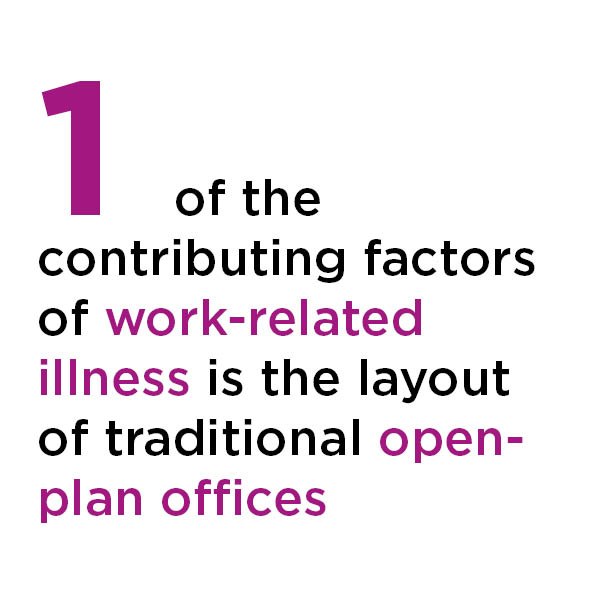
One of the contributing factors of work-related illness is the layout of traditional open-plan offices. Critics have observed open office configurations create too many distractions that increase stress and anxiety and culminate in dissatisfied and restless employees.
The World Green Building Council says the relationship between office designs and office users can have a significant impact on productivity and the prosperity of a business. Staff costs, including salaries and benefits, typically account for about 90% of business operating costs.
Smart business owners recognise the benefits of healthy employees. An unhealthy workforce culminates in a loss of productivity, increase in absenteeism, potential health costs, workplace depression and a drop-in staff retention.

Health and wellbeing is subsequently considered alongside the conservation of raw materials and energy-efficient systems when assessing green buildings۪. On a wider scale, wellbeing should be measured alongside sustainability and economic prosperity.
When considering the elements of an office design that cares for its occupants, interior office designers have to look beyond colour and furniture. Air quality, temperature, acoustics, interior layouts, lighting and the inclusion of natural elements (biophilia) each play a key role in the health and wellbeing in the workplace.
Studies have shown that daylight impacts mechanisms in the brain that regulate physiology, behaviour and the circadian rhythm. Given we spend around 90% of our time indoors, it has become apparent that a lack of natural daylight is having a negative effect on our sleep-wake cycle.
Poor sleep has a major impact on cognitive function and subsequently impairs work performance. Moreover, studies have shown sleep deprivation can have damaging effects on a person۪s health such as immune deficiency and heart disease.
In addition, artificial lighting in offices is known to contribute to symptoms such as eyestrain, headaches and blurred vision, all of which diminish the productivity of employees.
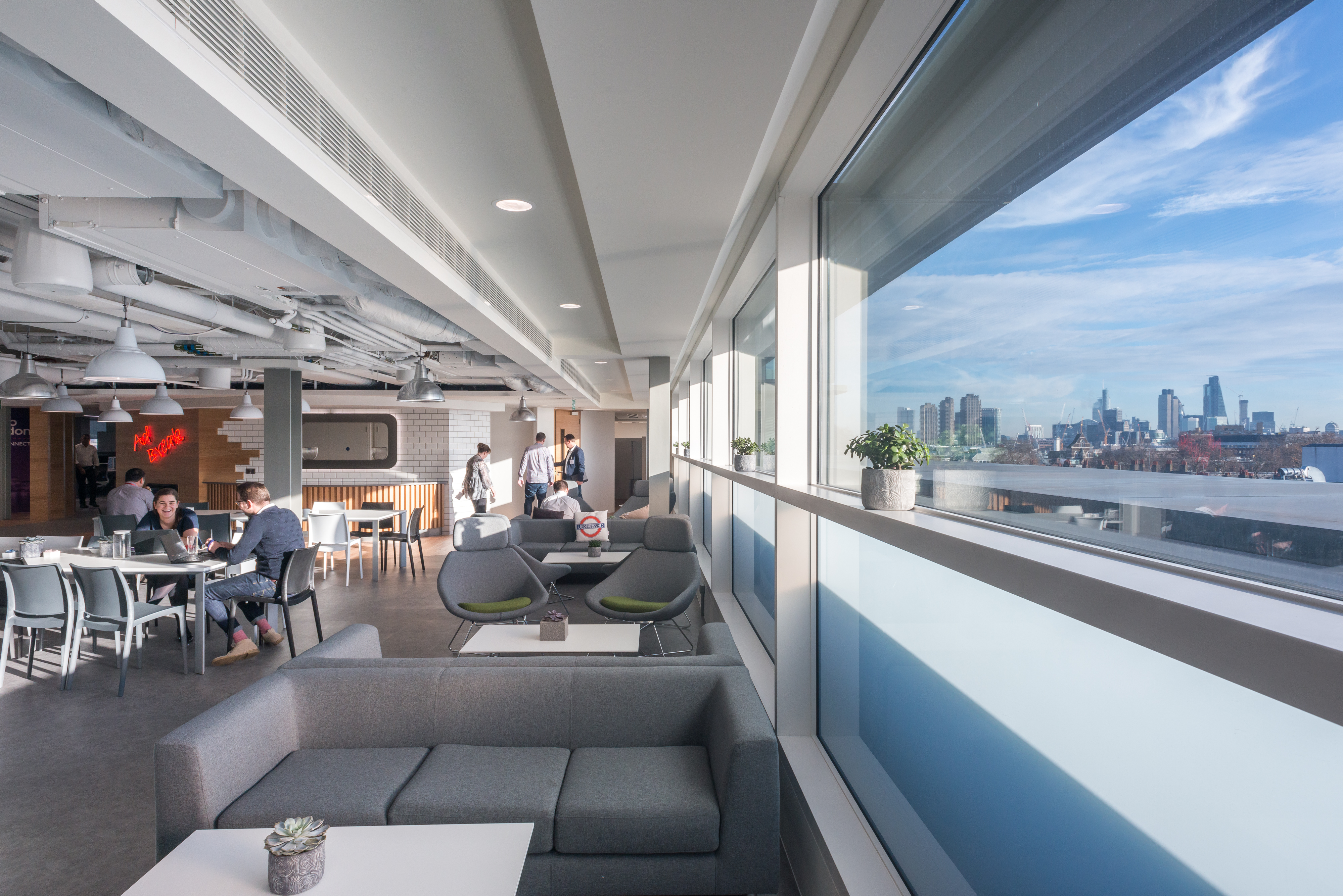
On the flip side, a 2017 study published by Rand Health Quarterly reveals workers who get a good night۪s sleep are more productive, creative and make fewer mistakes than colleagues that sleep for less than six hours a night.
A study conducted by researchers in the Department of Design and Environment Analysis at Cornell found that optimising natural light in an office improves the general health and wellbeing and revealed 84% of workers reported a drop in headaches and eye strain.
Installing floor-to-ceiling windows and skylights distribute natural light evenly throughout the office and eliminates glare. Moreover, workers exposed to natural daylight get their dose of Vitamin D which boost energy and wards off seasonal depression.
Offices that invite natural light also reduce the need for artificial lighting during daylight hours which helps companies cut energy use and reduce your carbon footprint. This can have an impact on how environmentally conscious employees and consumers perceive your company.
Artificial lighting, of course, cannot be completely eliminated. However, the latest lighting products emit spectrums that mimic natural daylight, and installing dimmers that adjust automatically in relation to the amount of light presence helps to provide a stable and even light source.
The NHS says sitting down too much can be a risk to your health. Sitting for long periods slows the metabolism and can have a negative impact on the body۪s ability to regulate sugar levels, blood pressure and break down body fat.

Studies have linked inactivity with obesity, coronary heart disease, type 2 diabetes, colon and breast cancer and premature death. Health experts recommend at least 150 minutes of exercise a week to reduce health risks associated with inactivity.
In most cases, office workers spend as much as 9-hours a day sitting at a desk - and that۪s before you factor in sitting time during commutes, mealtimes and watching TV.
A growing body of evidence that reveals the health risks of sedentary jobs underscores just how important movement and exercise is for the body to function properly - not to mention avoiding those niggling aches and pains. Experts recommend moving around every 30 minutes.
Office designs that encourage movement help to keep your workforce active and in better health. It۪s no secret that a healthy body is conducive to sound mental health and has a positive impact on performance. Businesses also benefit from reduced absenteeism and a happier work environment people enjoy spending their time in.
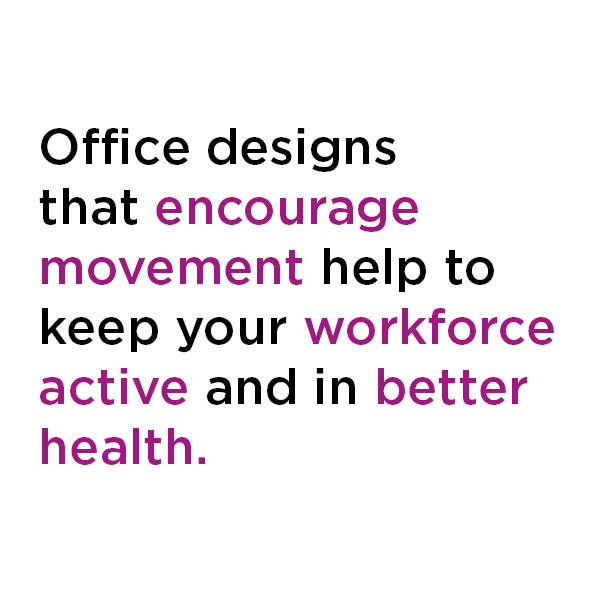
Whilst traditional open plan layouts keep various functions of each department in mind, agile office designs are centred around activity-based workstations which enhance effectiveness and efficiency of individuals. Thanks to wireless technologies and cloud computing, organisations can freely create flexible spaces and promote movement.
Agile office designs not only give employees the freedom to choose where and how they work but should encourage them to take the stairs instead of the elevated stand to work, use outdoor space, and even engage in energetic exercises. On-site gyms, five-a-side football pitches and yoga studios in the office are not unheard of.
The full extent of poor indoor air quality is unknown, but experts claim pollutants in an office environment can be two to five times worse than outdoors. This is because indoor air contains whatever is outside the office, plus toxicity from cleaning products, carpet bacteria, cooking oil, building materials and office technologies like printers and fax machines that emit ozone.
Employees in high-rise offices, particularly in busy city centres that have a high concentration of traffic are more likely to breathe in carbon monoxide and other pollutants sucked in from the outside. A BBC report raising awareness about indoor air quality explains that air conditioning units are practically useless unless they are fitted with proper filters.

The National Bureau of Economic Research estimates that for every 10 micrograms of harmful PM2.5 particulates in the air affects cognitive function which can cause productivity to drop at a cost of up to $0.41 per hour per person. In European office, PM2.5 particles range from 5 to 60 g/m3.
Ignoring air quality in an office design can lead to increased cases of Sick Building Syndrome (SBS), a condition linked with poor ventilation. SBS is reported to negatively impact productivity at work, increases absenteeism through illness and impairs performance.
Experts recommend cleaning air ducts and replacing filters on a regular basis helps to keep the airflow fresh. You should maintain a healthy level of humidity to help keep dust mites, mould and other allergens under control.
Spending more than eight hours a day in the office deprives people from connecting with nature - a condition which scientists say is an innate need for us to function properly; being around nature brings the senses to life and stimulates creativity.
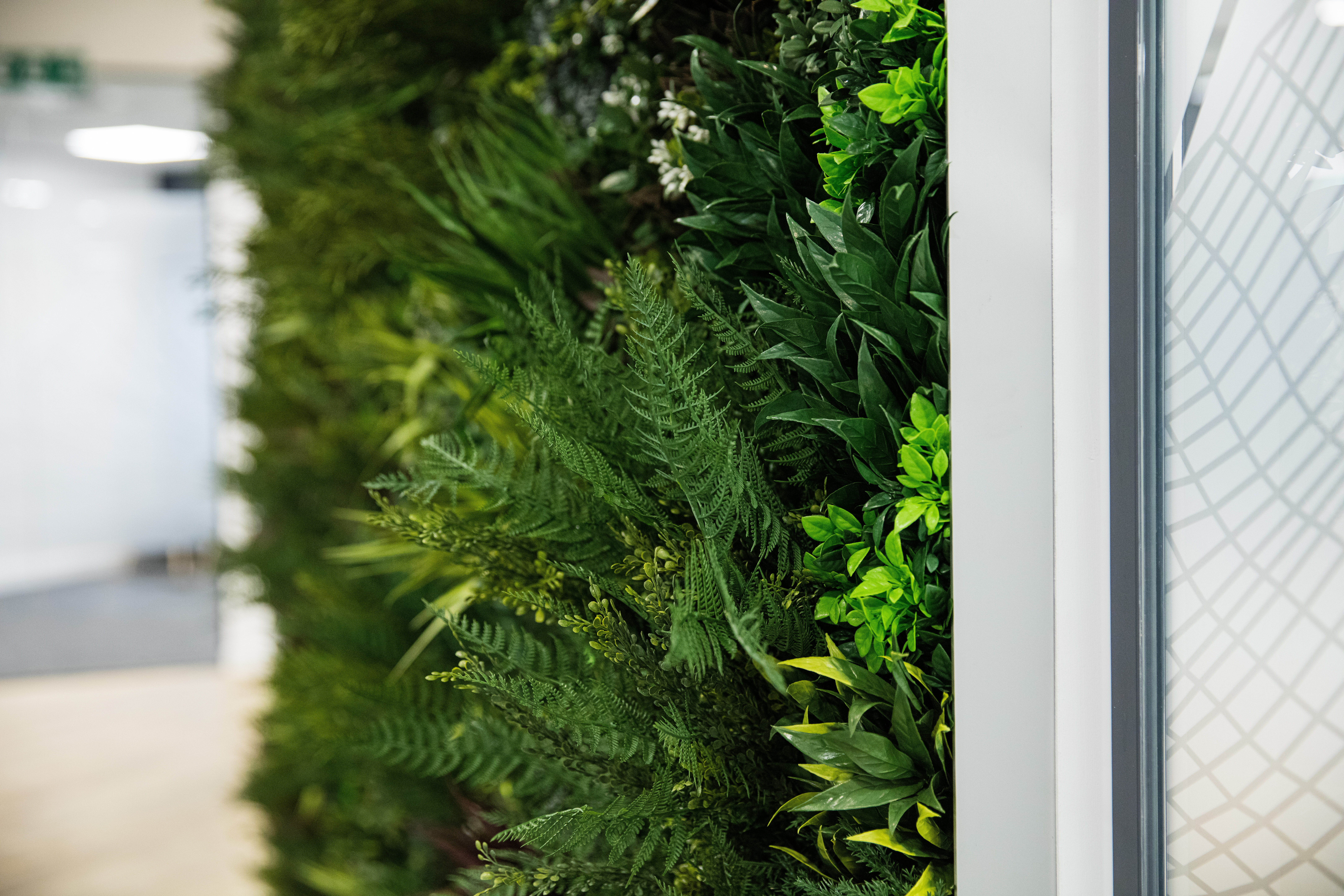
Moreover, biophilic designs are believed to improve mental health, reduce stress levels, increases productivity and reduce absenteeism. As a result, the principle of biophilia - our impulse to connect with nature - is making an appearance in office spaces throughout the UK.
The vast amount of scientific research on the restorative qualities of natural environments often depends on visual aspects. Biophilic design concepts, therefore, involve much more than adding a few pot plants and opening a window.
A common feature in biophilic office design is a living wall۪. An abundance of shrubbery and plants spread throughout the workplace increases oxygen levels and staves off mental fatigue. Studies show that enabling staff to maintain concentration levels increases output by 15%.
Incorporating other natural elements such as wood, stone, rock, marble, granite, sand and other rustic materials help to transport employees away from city surroundings.
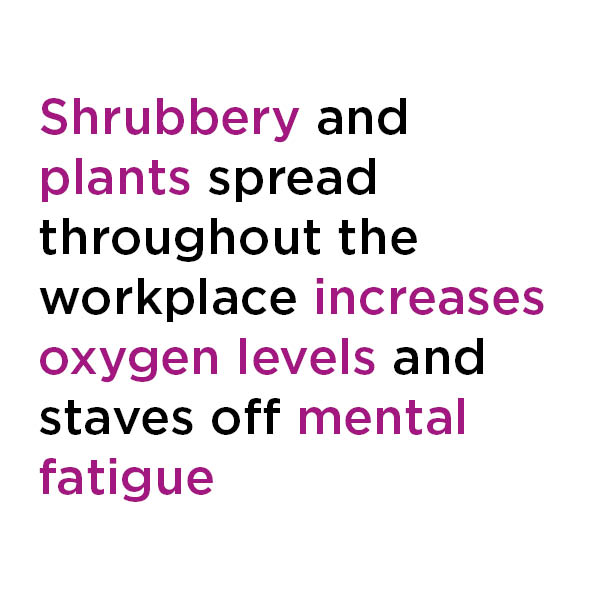
Adding water features, koi fish ponds or images of nature projected onto walls and windows are also highly effective. Auditory elements such as ocean waves and forest sounds can facilitate the recovery of psychological stress.
Expanding natural surroundings into outdoor spaces helps to pave the transition from concrete city to biophilic office. Creating a green entrance or installing a rooftop garden provides employees with a relaxing space where they can work in natural surroundings or take a restorative break.
Among the top ten lists of complaints among office workers are noise levels and the absence of sound privacy. Open-plan offices can be highly distracting. Noise levels can reach up to 65 decibels which makes creative thinking, decision-making, solving problems and effective communication very difficult.

Acoustic experts say the fluctuation of sounds that are typically associated with office environments are even more annoying - even if they are a relatively lower frequency than constant noise levels. And in a busy office irritating noises emerge from numerous sources; ringing telephones, nearby traffic, printers, photocopiers, drinks machines etc.
However, cognitively, research shows the most destructive sound of all is the conversations between colleagues. Someone else talking about soap operas nearby, for instance, can disrupt concentration levels and even cause speech interference between two other colleagues having a deep conversation about work.
Anybody that has worked in an open office environment will know that the common response to noise is annoyance. The second most common is exhaustion whereby individuals simply give up.
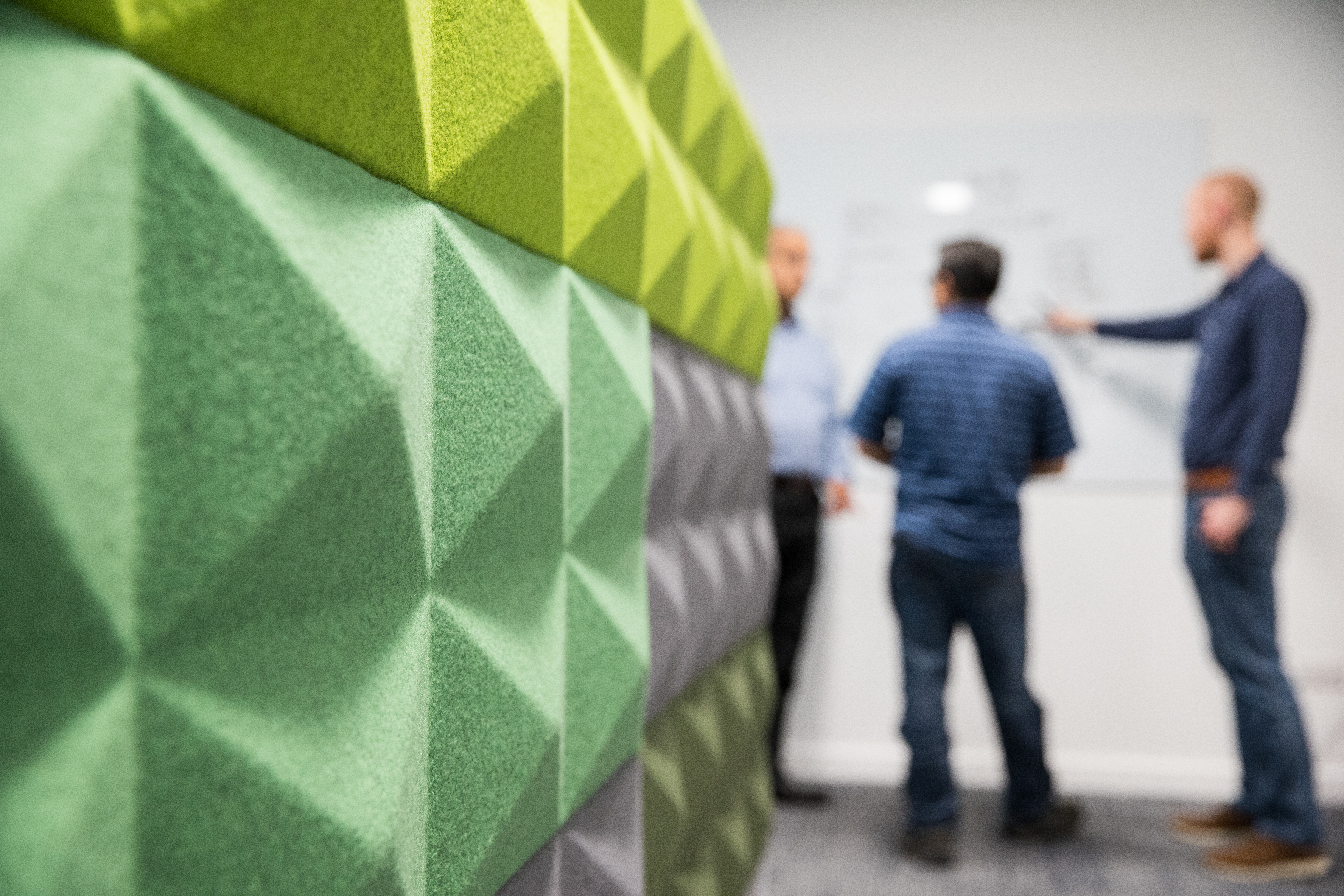
Studies have also shown that workers exposed to occupational noise pollution report a prevalence of rising blood pressure, abnormal ECG (electrocardiogram) which can lead to heart disease, and a higher release of stress hormones which have a negative impact on the nervous system.
To overcome noise pollution in the office, install a variety of work areas that are designed with sound consciousness in mind. Thoughtful acoustic controls can help improve productivity and tender towards the health and wellbeing of your staff.
Interior design solutions include acoustic friendly partitions, sound-absorbing walls and ceilings foams, free-standing screens and desk fitted screens which deflect noise.
In an agile office, you can also create specific areas of the office for quiet and collaborative areas where noise levels will reach higher volumes. The best option, however, is to install a series of acoustic meeting pods and soundproof telephone booths.
Office Principles with so much focus on creating an office environment that caters towards the health and wellbeing of employees, understanding the results of scientific research helps interior office designers and business owners understand the needs of your workforce.
That۪s not to say that every organisation suffers from each of the health and wellbeing issues described above. Every company has unique specifications in relation to the space you occupy. Office design can be very complex.
Forward-thinking companies are increasingly reaching out to professional interior designers for advice and assistance. Captains of industry that realise the health and wellbeing of employees has to be central to your office layout can expect to improve absenteeism, happiness, productivity and staff retention.
News
11 Apr 2024
News
11 Apr 2024
News
09 Apr 2024
Blog
03 Apr 2024